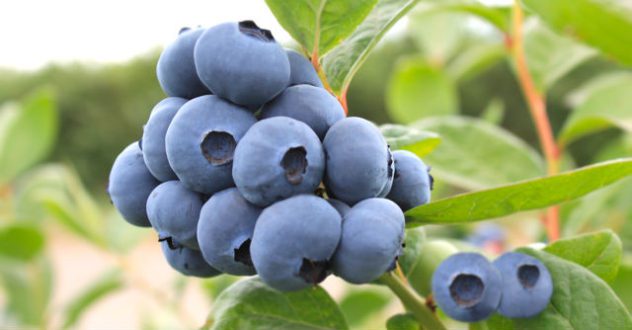Oct 25, 2017Organic production systems in northern highbush blueberry
A long-term trial was established in Oct. 2006 in western Oregon to identify organic production systems for maximum yield and quality in highbush blueberry (Vaccinium corymbosum L.). The planting was transitional during the first year after planting and was certified organic during fruit production (2008–16).
Treatments included planting method (on raised beds or flat ground), fertilizer source (granular feather meal or fish solubles), and rate (“low” and “high” rates of 29 and 57 kg·ha−1 N during establishment, increased incrementally as the planting matured to 73 and 140 kg·ha−1 N, respectively), mulch [sawdust, yard debris compost topped with sawdust (compost + sawdust), or black, woven polyethylene groundcover (weed mat)], and cultivar (‘Duke’ and ‘Liberty’).
Mulches were replenished, as needed, and weeds were controlled throughout the study. Raised beds resulted in greater yield than flat ground during the establishment years but had less effect on yield once the plants were mature.
After 9 years, cumulative yield was 22% greater on raised beds than on flat ground in ‘Liberty’ but was unaffected by planting method in ‘Duke’. Cumulative yield was also 10% greater with feather meal than with fish solubles, on average, and 4% greater with the low rate than with the high rate of fertilizer.
‘Duke’ was particularly sensitive to fertilizer source and produced 35% less yield overall with fish solubles than with feather meal. By contrast, there was relatively little effect of fertilizer source or rate on yield in ‘Liberty’. In five of 9 years, yield was 8% to 20% greater with weed mat than with sawdust or compost + sawdust. Mulch type had no effect on cumulative yield of ‘Duke’, but cumulative yield of ‘Liberty’ was 11% greater with weed mat than with sawdust or compost + sawdust. Soil temperature was warmer under weed mat than under sawdust, and plants on raised beds covered with weed mat required more irrigation than those grown on flat ground mulched with sawdust.
‘Duke’ produced heavier, larger, and firmer berries with lower total soluble solids (TSS) than ‘Liberty’. However, other treatment effects on berry quality were relatively small and inconsistent. For example, berry weight was greater on raised beds than on flat ground, on average, but only by 3% (0.06 g/berry). Plants on raised beds also produced berries with slightly lower TSS than those on flat ground (15.2% and 15.7%, respectively, in ‘Liberty’, and 13.1% and 13.3%, respectively in ‘Duke’). There was no effect of fertilizer source or rate on TSS in ‘Liberty’ (15.5% on average), whereas in ‘Duke’, TSS was highest when fertilized at the high (13.7%) or low (13.4%) rate of fish, and was lower when using feather meal (12.9% and 13.1% for low and high rate, respectively).
Plants fertilized with fish produced firmer fruit than with feather meal in five of the 7 years in which the measurements were taken. Also, fertilization with the higher rate of either product increased berry firmness compared with the low rate in six of the 7 years.
The impact of mulch was inconsistent through the study period. On average, ‘Duke’ berries were softest when fertilized with the low (173 g·mm−1 deflection) and high (176 g·mm−1) rates of feather meal and were the firmest with the high rate of fish (182 g·mm−1). In ‘Liberty’, the low rate of feather meal produced softer fruit (157 g·mm−1) than the other fertilizer treatments (162 g·mm−1 on average).
When this study was initiated in 2006, the most common organic production system in this region was raised beds with sawdust mulch and fertilizing with a high rate of fish solubles. For this production system, yield for mature plants in our study (2014−16) was the equivalent of 8.9−12.3 t·ha−1 in ‘Duke’ and 11.8−23.7 t·ha−1 in ‘Liberty’. However, when plants were grown on raised beds with weed mat and fertilized with the high rate of feather meal, yield increased to 10.2−19.3 t·ha−1, depending on year, in ‘Duke’. By contrast, there was little effect of production system on yield of mature ‘Liberty’ plants.
These yields, particularly for the best-performing treatment combination in ‘Duke’, are similar to what are observed in commercial conventional fields or organic farms using similar management practices. This study’s results showed that choice of organic production system can have significant impact on yield and economic costs and returns.
–Bernadine C. Strik, Oregon State University















